BattleTechnology
Oct. 1st, 2013 08:50 amBattlemechs
A BattleMech (often abbreviated 'Mech) is an armored combat vehicle of roughly humanoid shape, some 6 to 20 meters tall and typically massing from 20 to 100 tons. 'Mechs are best suited for ground combat, although they are also capable of operation underwater and in space.
A single mech can easily destroy a city block and in most situations have the advantage over any other kind of vehicle. Conventional infantry are only dangerous to them in massive numbers. However no single mech can do every job well. Light mechs (20 to 35 tons) tend to be quite fast (a few light mechs can reach 180 kph) and cheaper but have less tonnage for armor and weapons. Medium mechs (40 to 55 tons) are usually the workhorses of the battlefield, able to do many jobs adequately but none outstandingly. Heavy mechs (60 to 75 tons) are usually well armored and armed and capable of adequate speed. Assault mechs (80 to 100 tons) are slow but are very well armored and carry staggering amounts of weaponry.
Mechwarriors:
Mechwarrior with coolant vest and neurohelmet
The less bulky Clan-tech version
Considered the 'knights' of the 31st century, mechwarriors are the elite of most nation's militaries. The position is often hereditary, with the same mech being passed down through generations of the same family. There are other ways to acquire experience with a mech than being born into the right family though. A character could have served in a faction's military or a mercenary unit, for instance. Good scores on a simulator, while not the exact same thing as piloting a real live mech, may attract the attention of a Stable or Cooperative.
Anatomy Of A Mech:
Internal Structure/Tonnage:
The "bones" of a mech, the internal structure is the framework on which every part of it is attached to in some way. The structure of each mech has a maximum tonnage. Mounting any more equipment than the structure is designed to support risks serious damage. This maximum tonnage is the basis for the division of mechs into light, medium, heavy and assault weight categories.
Since every piece of battlemech equipment or weapon weighs at least a quarter of a ton, mech designers must carefully balance the tonnage required for the mech's engine, heat sinks, weapons and equipment.
Engine:
The "heart" of the battlemech, Fusion Engines run for days on a few gallons of water. The larger the engine, the faster the battlemech. Extra Light engines are relatively rare but weigh much less than standard fusion engines, at the cost of increased bulk, chance of being damaged and a hefty price tag.
Damage to the engine may result in the mech shutting down due to a lack of power or even an explosion that damages anything within about ninety meters of the mech.
Armor:
Battlemech Armor is the mech's 'skin', protecting it from damage. The more tonnage devoted to it, the better protected the mech is. Rear armor is almost always thinner than front armor, meaning a mech that gets behind its opponent can inflict grievous damage.
Special armor types include FerroFibrous and Stealth types.
Gyro:
Like the inner ear of a human, the Gyro of a mech keeps it stable, receiving data from the mechwarrior's own sense of balance via the neurohelmet. Damage to the gyro can cause the mech to lose its balance.
Myomer:
The 'muscles' of the mech, myomer is a material that strongly contracts when exposed to an electrical current. This is what drives mech movement.
Cockpit:
Interior view of the cockpit of an HBK-4G Hunchback medium class battlemech.
Obviously a mech needs a functional mechwarrior, so protection of the cockpit is paramount. However there are practical limits to the amount of glasstic that can cover the cockpit, so this will always remain a uniquely vulnerable location in mech combat, such that a lucky cockpit hit is capable of taking out even an Assault class mech. Additionally, the pilot is vulnerable when the mech becomes overheated or jostled around. Most mechwarriors wear some kind of coolant suit or vest to protect from stray heat, though the poorest have been known to simply pack their clothes with ice! Torso mounted cockpits improve safety for the pilot and durability at the expense of comfort, cockpit heat and weight. Deliberately aiming for the cockpit is considered a dick move, and may cost you sponsorships or even a shot at the championship, but that doesn't mean it doesn't happen.
Mechwarriors use a combination of conventional controls and a neurohelmet to control their mechs.
Ejection seats are standard on almost all battlemechs.
Arms:
A BJ-1 Blackjack, a mech with no hands or elbows
An AS7-K Atlas punching a Clan Warhawk (Masakari)
Battlemech arms provide additional space for mounting weapons and may also be used to strike opponents. Mechs with hands trade some additional bulk for the ability to grasp and grapple. Mechs without hands or elbows may flip their arms over, to fire behind them.
Legs:
A CPLT-C3 Catapult, a 'bird walker' battlemech
An ON1-K Orion, a 'man walker' battlemech
A CPLT-C3 Catapult performs the Death From Above maneuver on a Clan Warhawk (Masakari)
A DRG-1k Dragon taking advantage of the terrain to kick an Enforcer
Battlemech legs may be used to kick an opponent or perform the difficult but devestating Death From Above maneuver. The knee joints are particularly vulnerable locations. Shots targeted there may lock the joint up or cause the mech to topple over.
Weapons:
There are four main kinds of weapons used by battlemechs: energy, projectile, missile and physical.
Energy Weapons:
AWS-8Q Awesome firing particle projection cannons
A light mech firing pulse lasers
Energy weapons deal damage by directing concentrated heat, radiation or streams of particles at a target. Lasers, Particle Projection Cannons and Flamers fall under this category of weapon.
Though energy weapons require no ammunition, they build up more heat than any other kind of weapon.
Ballistic Weapons:
Ballistic weapons fire high-speed, unguided projectiles designed to inflict kinetic and/or explosive damage. When compared to Energy Weapons, ballistic weapons produce far less heat, but are generally bulkier and dependent upon limited ammunition. Battlemech scale ballistic weapons include Autocannons, Gauss Rifles and Machine guns. Artillery Cannons are almost never seen in individual combat but may be useful in team games where one mech can act as a spotter with Targeting Gear. Clever mechwarriors can use a Fluid Gun to set their enemies and the terrain alight or make parts of the terrain too slick to run through.
Missile Weapons:
Missile Weapons are Rockets and Missiles that are fired from tubes and include an engine in the projectile. Some of these weapons travel a flat trajectory, others have an arcing trajectory that allows them to clear terrain features. Long, Medium and Short range missile launchers are the most common types of missile weapons. Some mechs also carry more primitive Rocket Launchers, the NARC Beacon System and Arrow IV Missile Artillery. Mech Scale Mortars are also enjoying a comeback.
Exotic ammunition, such as Inferno and Minelayer missiles are also sometimes seen.
Missile weapons generally create less heat than energy weapons but more than ballistic ones.
Melee Weapons:
Though some regard them as a waste of tonnage, and the Clans disdain all mech melee combat, melee weapons such as mech scale Axes, Swords, Claws, Clubs, Spikes and the more exotic Vibroblade can all be devastating in the hands of a skilled user in close combat.
The rarely seen Battlemech Taser is also technically considered a melee weapon.
Equipment:
Battlemechs mount a variety of types of equipment to enhance their capabilities. Perhaps the most popular piece of equipment is the Jump Jet. Targeting Computers drastically improve accuracy, though they are expensive, rare and somewhat bulky. Electronic Countermeasure (ECM) Suites disrupt electronics. CASE protects against damage from ammo explosions. C3 Equipment is useful for team games, though useless otherwise. Anti-Missile Systems protect against missiles. MASC can put on short bursts of speed at the risk of leg damage. Triple Strength Myomer enhances the power of physical attacks when the battlemech is running hot.
Heat:
Every action a battlemech takes, such as moving, jumping or firing its weapons generates some amount of heat. An overheated battlemech risks damage to the pilot and equipment and ammo explosions. If heat becomes extreme, the mech will automatically shutdown, avoiding further heat buildup but leaving it defenseless for a few seconds. This shutdown can be overriden, but it risks the mech becoming incapacitated due to its components literally melting or its engine exploding.
To help combat heat, mechs equip Heat Sinks, which efficiently vent heat but weigh a ton each, or Coolant Pods. Mechwarriors also regulate their rate of fire to stay cool, firing and moving more often when cool and less when hot. Walking a mech into water is also an effective way of cooling off faster.
Certain weapons, such as Inferno Ammunition and Flamers are designed to inflict additional heat on their targets.
Tactics:
The unique characteristics of battlemechs make for equally unique tactics.
As mentioned above, heat management is a primary concern of the mechwarrior. Baiting an enemy mech into taking an innacurate pot shot to make their heat climb high enough that they can't fire a second salvo for a long time is a tactic used by the skilled. A follow up attack with heat causing weapons can force the enemy mech to shut down.
Most battlemechs are optimised for a certain range of combat. Mechs which mount many long range weapons, such as long range missiles, particle cannons, large lasers, gauss rifles and light autocannons will seek high ground to snipe, taking out their opponents from outside their range. Mechs with short range weapons such as medium and small lasers, short range missiles, heavy autocannons, machine guns and melee weapons will seek to close as quickly as possible with an opponent, by charging, using cover, or waiting in ambush while powered down.
In desperation, some mechwarriors resort to a tactic called an Alpha Strike: firing all the mech's weapon systems at the same time. This is devastating if it hits but risks immediate shutdown from overheating.
While even the lightest battlemechs are well armored, repeated hits to the same location will usually open holes in that armor, increasing the likelihood that subsuquent fire will disable a vital component such as a heat sink, weapon system or even the engine. To facilitate this, mechwarriors often concentrate fire around the same location. Conversely, wily mechwarriors under fire will twist their mech from side to side, spreading the damage around.
Almost all bipedal mechs can twist their torso about sixty degrees from side to side, letting the mech fire to the side while moving forward. It's common in mech battles to see two mechs circling each other with their torsos twisted, the so called "circle of death".
There are locations on a mech that are particularly vulnerable, due to the difficulty or rarity of them being well armored. These include the cockpit (though firing on a cockpit is frowned upon in the arena), armor on the mech's rear and the joints. Lighter mechs or mechs with jump jets facing heavier ones will often try to use their superior agility to maneuver to their opponent's rear.
A battlemech whose weapons have all been destroyed still has one way to try to achieve victory: physical attacks. All mechs can kick (though this is more like something you'd see on a Three Stooges episode than a graceful martial arts move) and those with hands and elbows can punch. This risks damage to the attacking mech as well but can be surprisingly effective. More sophisticated maneuvers, such as shoving and grappling can be attempted by skilled mechwarriors. And of course a battlemech that carries a melee weapon has the advantage in all close quarters mech combat.
Special Types:
There are a few types of mech less commonly seen on Solaris 7:
WorkMechs are used for industrial applications. They generally use internal combustion engines, which are much less powerful than fusion engines but sufficient for their needs. Only in the most low-rent arenas will you see converted workmechs fighting. They can be found in the planet's mining and logging settlements though.
Quad Mechs are exactly what they sound like: quadrapedal, using their 'arms' for legs instead. They are bumpy rides, difficult to maintain and unable to mount hands but more stable than conventional bipedal mechs and able to move laterally. The most common of these uncommon mechs are the Scorpion, Tarantula and Goliath.
Originally developed by the Clans, Omnimechs have no fixed loadout but rather a series of bays and attachment ports that allow weapons to be swapped in for a variety of roles. This means an omnimech can have a completely different weapons loadout within the space of a few hours. Omnimechs technology in the Inner Sphere is rare and expensive.
Land-Air Mechs are an extremely rare type of mech that is capable of transforming into an aerospace fighter or a hybrid form that combines the two. Though versatile, LAMs proved too fragile and temperamental to survive the ravages of the Succession Wars and nowadays there are no more plants that manufacture them and only a few dozen still exist throughout the whole galaxy. LAMs on Solaris may be entered in battlemech (in battlemech mode and/or airmech mode, where the terrain of the arena permits it) or aerospace matches (in aerospace or airmech mode).
Entering battlemech mode in an aerospace match is considered forfeiting.
Due to the smaller arenas, entering aerospace mode in a battlemech match is a ticket to an early grave and should not be attempted.
Due to their rarity and potential for powergaming, we'd prefer that only characters who pilot a LAM-esque vehicle in their canon (such as Heero Yuy or Rick Hunter) pilot a LAM in this game.
Exceedingly strange but also murderously effective when used right, protomechs were first encountered during the annihilation of Clan Smoke Jaguar, two years ago. For various reasons, player characters will probably not be allowed to own or pilot protomechs. If you can think of a compelling reason why your character should be allowed to pilot one, we'll listen. But don't get your hopes up.
Vehicles
Demolisher heavy tanks take on mechs
A Draconis Combine tanker, with the personal armor and miniature fire extinguisher that are often worn
Though often maligned by haughty mechwarriors, conventional vehicles still fulfill important roles on the battlefield and have their own dedicated arenas on Solaris 7, as well as being eligible for the open class grand championship.
Vehicle components:
Crew:
Though in the original Battletech universe all vehicles about 15 tons required at least two crew, players with vehicles can opt out of that requirement if they wish by handwaving that parts of their machine are 'automated' instead.
Engine:
Unlike battlemechs, some combat vehicles use bulkier but less expensive internal combustion engines. However others use fusion engines that are identical to those used in battlemechs.
Armor:
Vehicle armor is identical to battlemech armor, though there are places it can't cover, as shown in the paragraph below.
Motive Type:
The Savannah Master, a popular light hovervehicle design
A wheeled Hetzer tank-destroyer
A massive Demolisher tracked vehicle
The popular Yellow Jacket sniper VTOL
Hovervehicles use a forced cushion of air to keep themselves aloft and skimming the surface below it. By nature a lightweight design, hovervehicles tend to be very fast and can outmaneuver even battlemechs by skimming over water. However a hit to the vehicle's skirt can send it crashing to the ground, immobile.
Wheeled Vehicles use all-terrain wheels, striking a good balance between the speed of hover vehicles and the durability of tracked vehicles, with a lightweight motive system to boot. However wheeled vehicles cannot traverse the same terrain as either hover or tracked vehicles.
Tracked Vehicles use interlocking metal treads for movement. Though the slowest kind of vehicle, their treads are more durable than any other type, though they are still vulnerable. The largest land combat vehicles are all tracked.
Vertical Takeoff And Landing Craft include helicoptors and tilt-rotor conventional aircraft. Some vehicle and aircraft arenas allow them to be entered as well. Rare Wing In Ground Effect Vehicles are similar to VTOLs.
Weapons and Equipment:
Vehicles use identical weapons and equipment to battlemechs, with the following restrictions: They don't mount physical weapons (though theoretically one could mount a Lance, for ramming purposes), they must mount enough Heat Sinks to completely dissipate any heat they build up (or the heat buildup would fry the crew, who are in a much thicker structure than that of a battlemech and closer to the engine). Vehicles can also mount jump jets, though only one known design, the Kanga, does. Vehicles can mount weapons on a turret, making for effective 360 degree fire.
Tactics:
Tank warfare has changed very little in the millenium since its introduction in the Battletech universe. Only the development of anti-mech tactics (such as ramming the legs in hopes of knocking it over and using a hovercraft's superior maneuverability to lure the mech into an ambush) are new.
Special Types:
OmniVehicles are a rare technology, new in the Inner Sphere, but promising to change vehicle warfare in the same way omnimechs changed battlemech warfare. Other special types of vehicle, such as airships and submarines exist, but those are obviously unsuited to arena combat.
Fighters
Cutaway of a Clan Sabutai fighter
A Draconis Combine fighter pilot in her pressure suit and neurohelmet
Capable of both atmospheric and space flight Aerospace Fighters are an important supplement to battlemechs on the battlefield and have a small but dedicated following for their matches on Solaris. Being capable of going up to nine times the speed of sound, specialized equipment is needed to keep the pilot from blacking out. Even still, aerospace piloting is a demanding job. For more information on the Aerospace divisions, see the divisions page.
Anatomy:
Aerospace fighter engines, sensors and controls are very similar to those of battlemechs, including the use of a neurohelmet. They must also watch out for heat in the same way as a battlemech.
Aerospace fighters require fuel to continue flying. During extended missions or matches, they often carry additional fuel in external pods.
Weapons:
Aerospace fighters use all the same weapons and most of the same equipment as battlemechs and vehicles (with the obvious exception of melee weapons). Their external pods are also capable of mounting a variety of single use weapons, though only a few of those see use on Solaris.
Tactics:
Dogfighting is an art over a millenia old in the battletech universe. One maneuver usable only by aerospace fighters in space is called the sideslip: the fighter accelerates in a direction parralel to its opponent then uses its maneuvering thrusters to turn the nose of the fighter in the opponent's direction, ready to fire in one direction while moving in the other.
Special Types:
Like their mech and vehicle cousins, rare omnifighters are capable of swapping in entire new loadouts within a few hours.
Conventional fighters are traditional aerodyne craft designed to only operate within an atmosphere. Though weak compared to aerospace fighters and unable to fly in the vacuum of space, conventional fighters are considerably cheaper to build and require a much lower technology level to manufacture.
Battle Armor
A massive Clan elemental trooper inside his even more massive armor
Battle Armor are powered exoskeletons that protect an infantry trooper, enhance their strength and allow them to carry weapons that would be impossible for a conventional trooper. In close quarters, squads of battle armor are a threat to vehicles and even battlemechs.
Although battle armor technology was first developed hundreds of years ago, during the height of the Star League, the technology was mostly lost during the Succession Wars. Only with the Clan invasion and their use of genetically enhanced battle armor troopers has the Inner Sphere rediscovered this technology. Though they're far outnumbered by conventional infantry, battle armor troopers are capable of taking on many times their number of conventional troops.
Anatomy:
Cutaway of a Clan Elemental battle armor, showing the trooper inside and the myomer muscles that move it
A battle armor suit fully encases its wearer, usually giving them enough protection to stop a hit or two from a mech class weapon system. The suit responds to the user's motions, amplifying them with its myomer musculature and making the trooper much stronger than an unarmored person. In effect it acts in much the same way as their body. This makes battle armor physically demanding to operate.
The suit's weapons are fired by making specific shapes with the hands. Other commands are voice activated.
Unlike mechs, combat vehicles and fighters, battle armor is too small to mount a fusion engine. Instead rechargeable power packs are used, providing enough power for about a day's continued use.
The small size of battle armor means that the armor as a whole is rarely in danger of overheating, though individual weapons may still overheat when fired rapidly.
Weapons:
Sitting midway in size between a conventional trooper and a light vehicle, battle armor is capable of mounting weapons that weigh up to two tons, from infantry weapons held in the hand up to a mech class medium laser. A variety of specialized equipment developed exclusively for battle armor has also cropped up in recent years.
Tactics:
Battle armor warfare combines the franticness of infantry combat with the systems management and aiming for vulnerable armor locations of battlemech combat.
Like their larger cousins, battle armor sometimes engages in physical combat, where units mounting/carrying melee weapons like a claw or Vibroblade have the advantage. This type of close combat often resembles a martial arts or wrestling match, due to the armor's close reproduction of the wearer's movements.
Battle armor facing mechs and vehicles can engage in one special kind of attack: the swarm. The trooper(s) will physically climb or jump onto the enemey mech or vehicle and rip open their armor then fire into the exposed interior, hoping to hit something vital. This risky maneuver can bring down mechs or vehicles much larger than the trooper(s).
A BattleMech (often abbreviated 'Mech) is an armored combat vehicle of roughly humanoid shape, some 6 to 20 meters tall and typically massing from 20 to 100 tons. 'Mechs are best suited for ground combat, although they are also capable of operation underwater and in space.
A single mech can easily destroy a city block and in most situations have the advantage over any other kind of vehicle. Conventional infantry are only dangerous to them in massive numbers. However no single mech can do every job well. Light mechs (20 to 35 tons) tend to be quite fast (a few light mechs can reach 180 kph) and cheaper but have less tonnage for armor and weapons. Medium mechs (40 to 55 tons) are usually the workhorses of the battlefield, able to do many jobs adequately but none outstandingly. Heavy mechs (60 to 75 tons) are usually well armored and armed and capable of adequate speed. Assault mechs (80 to 100 tons) are slow but are very well armored and carry staggering amounts of weaponry.
Mechwarriors:
Mechwarrior with coolant vest and neurohelmet
The less bulky Clan-tech version
Considered the 'knights' of the 31st century, mechwarriors are the elite of most nation's militaries. The position is often hereditary, with the same mech being passed down through generations of the same family. There are other ways to acquire experience with a mech than being born into the right family though. A character could have served in a faction's military or a mercenary unit, for instance. Good scores on a simulator, while not the exact same thing as piloting a real live mech, may attract the attention of a Stable or Cooperative.
Anatomy Of A Mech:
Internal Structure/Tonnage:
The "bones" of a mech, the internal structure is the framework on which every part of it is attached to in some way. The structure of each mech has a maximum tonnage. Mounting any more equipment than the structure is designed to support risks serious damage. This maximum tonnage is the basis for the division of mechs into light, medium, heavy and assault weight categories.
Since every piece of battlemech equipment or weapon weighs at least a quarter of a ton, mech designers must carefully balance the tonnage required for the mech's engine, heat sinks, weapons and equipment.
Engine:
The "heart" of the battlemech, Fusion Engines run for days on a few gallons of water. The larger the engine, the faster the battlemech. Extra Light engines are relatively rare but weigh much less than standard fusion engines, at the cost of increased bulk, chance of being damaged and a hefty price tag.
Damage to the engine may result in the mech shutting down due to a lack of power or even an explosion that damages anything within about ninety meters of the mech.
Armor:
Battlemech Armor is the mech's 'skin', protecting it from damage. The more tonnage devoted to it, the better protected the mech is. Rear armor is almost always thinner than front armor, meaning a mech that gets behind its opponent can inflict grievous damage.
Special armor types include FerroFibrous and Stealth types.
Gyro:
Like the inner ear of a human, the Gyro of a mech keeps it stable, receiving data from the mechwarrior's own sense of balance via the neurohelmet. Damage to the gyro can cause the mech to lose its balance.
Myomer:
The 'muscles' of the mech, myomer is a material that strongly contracts when exposed to an electrical current. This is what drives mech movement.
Cockpit:
Interior view of the cockpit of an HBK-4G Hunchback medium class battlemech.
Obviously a mech needs a functional mechwarrior, so protection of the cockpit is paramount. However there are practical limits to the amount of glasstic that can cover the cockpit, so this will always remain a uniquely vulnerable location in mech combat, such that a lucky cockpit hit is capable of taking out even an Assault class mech. Additionally, the pilot is vulnerable when the mech becomes overheated or jostled around. Most mechwarriors wear some kind of coolant suit or vest to protect from stray heat, though the poorest have been known to simply pack their clothes with ice! Torso mounted cockpits improve safety for the pilot and durability at the expense of comfort, cockpit heat and weight. Deliberately aiming for the cockpit is considered a dick move, and may cost you sponsorships or even a shot at the championship, but that doesn't mean it doesn't happen.
Mechwarriors use a combination of conventional controls and a neurohelmet to control their mechs.
Ejection seats are standard on almost all battlemechs.
Arms:
A BJ-1 Blackjack, a mech with no hands or elbows
An AS7-K Atlas punching a Clan Warhawk (Masakari)
Battlemech arms provide additional space for mounting weapons and may also be used to strike opponents. Mechs with hands trade some additional bulk for the ability to grasp and grapple. Mechs without hands or elbows may flip their arms over, to fire behind them.
Legs:
A CPLT-C3 Catapult, a 'bird walker' battlemech
An ON1-K Orion, a 'man walker' battlemech
A CPLT-C3 Catapult performs the Death From Above maneuver on a Clan Warhawk (Masakari)
A DRG-1k Dragon taking advantage of the terrain to kick an Enforcer
Battlemech legs may be used to kick an opponent or perform the difficult but devestating Death From Above maneuver. The knee joints are particularly vulnerable locations. Shots targeted there may lock the joint up or cause the mech to topple over.
Weapons:
There are four main kinds of weapons used by battlemechs: energy, projectile, missile and physical.
Energy Weapons:
AWS-8Q Awesome firing particle projection cannons
A light mech firing pulse lasers
Energy weapons deal damage by directing concentrated heat, radiation or streams of particles at a target. Lasers, Particle Projection Cannons and Flamers fall under this category of weapon.
Though energy weapons require no ammunition, they build up more heat than any other kind of weapon.
Ballistic Weapons:
Ballistic weapons fire high-speed, unguided projectiles designed to inflict kinetic and/or explosive damage. When compared to Energy Weapons, ballistic weapons produce far less heat, but are generally bulkier and dependent upon limited ammunition. Battlemech scale ballistic weapons include Autocannons, Gauss Rifles and Machine guns. Artillery Cannons are almost never seen in individual combat but may be useful in team games where one mech can act as a spotter with Targeting Gear. Clever mechwarriors can use a Fluid Gun to set their enemies and the terrain alight or make parts of the terrain too slick to run through.
Missile Weapons:
Missile Weapons are Rockets and Missiles that are fired from tubes and include an engine in the projectile. Some of these weapons travel a flat trajectory, others have an arcing trajectory that allows them to clear terrain features. Long, Medium and Short range missile launchers are the most common types of missile weapons. Some mechs also carry more primitive Rocket Launchers, the NARC Beacon System and Arrow IV Missile Artillery. Mech Scale Mortars are also enjoying a comeback.
Exotic ammunition, such as Inferno and Minelayer missiles are also sometimes seen.
Missile weapons generally create less heat than energy weapons but more than ballistic ones.
Melee Weapons:
Though some regard them as a waste of tonnage, and the Clans disdain all mech melee combat, melee weapons such as mech scale Axes, Swords, Claws, Clubs, Spikes and the more exotic Vibroblade can all be devastating in the hands of a skilled user in close combat.
The rarely seen Battlemech Taser is also technically considered a melee weapon.
Equipment:
Battlemechs mount a variety of types of equipment to enhance their capabilities. Perhaps the most popular piece of equipment is the Jump Jet. Targeting Computers drastically improve accuracy, though they are expensive, rare and somewhat bulky. Electronic Countermeasure (ECM) Suites disrupt electronics. CASE protects against damage from ammo explosions. C3 Equipment is useful for team games, though useless otherwise. Anti-Missile Systems protect against missiles. MASC can put on short bursts of speed at the risk of leg damage. Triple Strength Myomer enhances the power of physical attacks when the battlemech is running hot.
Heat:
Every action a battlemech takes, such as moving, jumping or firing its weapons generates some amount of heat. An overheated battlemech risks damage to the pilot and equipment and ammo explosions. If heat becomes extreme, the mech will automatically shutdown, avoiding further heat buildup but leaving it defenseless for a few seconds. This shutdown can be overriden, but it risks the mech becoming incapacitated due to its components literally melting or its engine exploding.
To help combat heat, mechs equip Heat Sinks, which efficiently vent heat but weigh a ton each, or Coolant Pods. Mechwarriors also regulate their rate of fire to stay cool, firing and moving more often when cool and less when hot. Walking a mech into water is also an effective way of cooling off faster.
Certain weapons, such as Inferno Ammunition and Flamers are designed to inflict additional heat on their targets.
Tactics:
The unique characteristics of battlemechs make for equally unique tactics.
As mentioned above, heat management is a primary concern of the mechwarrior. Baiting an enemy mech into taking an innacurate pot shot to make their heat climb high enough that they can't fire a second salvo for a long time is a tactic used by the skilled. A follow up attack with heat causing weapons can force the enemy mech to shut down.
Most battlemechs are optimised for a certain range of combat. Mechs which mount many long range weapons, such as long range missiles, particle cannons, large lasers, gauss rifles and light autocannons will seek high ground to snipe, taking out their opponents from outside their range. Mechs with short range weapons such as medium and small lasers, short range missiles, heavy autocannons, machine guns and melee weapons will seek to close as quickly as possible with an opponent, by charging, using cover, or waiting in ambush while powered down.
In desperation, some mechwarriors resort to a tactic called an Alpha Strike: firing all the mech's weapon systems at the same time. This is devastating if it hits but risks immediate shutdown from overheating.
While even the lightest battlemechs are well armored, repeated hits to the same location will usually open holes in that armor, increasing the likelihood that subsuquent fire will disable a vital component such as a heat sink, weapon system or even the engine. To facilitate this, mechwarriors often concentrate fire around the same location. Conversely, wily mechwarriors under fire will twist their mech from side to side, spreading the damage around.
Almost all bipedal mechs can twist their torso about sixty degrees from side to side, letting the mech fire to the side while moving forward. It's common in mech battles to see two mechs circling each other with their torsos twisted, the so called "circle of death".
There are locations on a mech that are particularly vulnerable, due to the difficulty or rarity of them being well armored. These include the cockpit (though firing on a cockpit is frowned upon in the arena), armor on the mech's rear and the joints. Lighter mechs or mechs with jump jets facing heavier ones will often try to use their superior agility to maneuver to their opponent's rear.
A battlemech whose weapons have all been destroyed still has one way to try to achieve victory: physical attacks. All mechs can kick (though this is more like something you'd see on a Three Stooges episode than a graceful martial arts move) and those with hands and elbows can punch. This risks damage to the attacking mech as well but can be surprisingly effective. More sophisticated maneuvers, such as shoving and grappling can be attempted by skilled mechwarriors. And of course a battlemech that carries a melee weapon has the advantage in all close quarters mech combat.
Special Types:
There are a few types of mech less commonly seen on Solaris 7:
WorkMechs are used for industrial applications. They generally use internal combustion engines, which are much less powerful than fusion engines but sufficient for their needs. Only in the most low-rent arenas will you see converted workmechs fighting. They can be found in the planet's mining and logging settlements though.
Quad Mechs are exactly what they sound like: quadrapedal, using their 'arms' for legs instead. They are bumpy rides, difficult to maintain and unable to mount hands but more stable than conventional bipedal mechs and able to move laterally. The most common of these uncommon mechs are the Scorpion, Tarantula and Goliath.
Originally developed by the Clans, Omnimechs have no fixed loadout but rather a series of bays and attachment ports that allow weapons to be swapped in for a variety of roles. This means an omnimech can have a completely different weapons loadout within the space of a few hours. Omnimechs technology in the Inner Sphere is rare and expensive.
Land-Air Mechs are an extremely rare type of mech that is capable of transforming into an aerospace fighter or a hybrid form that combines the two. Though versatile, LAMs proved too fragile and temperamental to survive the ravages of the Succession Wars and nowadays there are no more plants that manufacture them and only a few dozen still exist throughout the whole galaxy. LAMs on Solaris may be entered in battlemech (in battlemech mode and/or airmech mode, where the terrain of the arena permits it) or aerospace matches (in aerospace or airmech mode).
Entering battlemech mode in an aerospace match is considered forfeiting.
Due to the smaller arenas, entering aerospace mode in a battlemech match is a ticket to an early grave and should not be attempted.
Due to their rarity and potential for powergaming, we'd prefer that only characters who pilot a LAM-esque vehicle in their canon (such as Heero Yuy or Rick Hunter) pilot a LAM in this game.
Exceedingly strange but also murderously effective when used right, protomechs were first encountered during the annihilation of Clan Smoke Jaguar, two years ago. For various reasons, player characters will probably not be allowed to own or pilot protomechs. If you can think of a compelling reason why your character should be allowed to pilot one, we'll listen. But don't get your hopes up.
Vehicles
Demolisher heavy tanks take on mechs
A Draconis Combine tanker, with the personal armor and miniature fire extinguisher that are often worn
Though often maligned by haughty mechwarriors, conventional vehicles still fulfill important roles on the battlefield and have their own dedicated arenas on Solaris 7, as well as being eligible for the open class grand championship.
Vehicle components:
Crew:
Though in the original Battletech universe all vehicles about 15 tons required at least two crew, players with vehicles can opt out of that requirement if they wish by handwaving that parts of their machine are 'automated' instead.
Engine:
Unlike battlemechs, some combat vehicles use bulkier but less expensive internal combustion engines. However others use fusion engines that are identical to those used in battlemechs.
Armor:
Vehicle armor is identical to battlemech armor, though there are places it can't cover, as shown in the paragraph below.
Motive Type:
The Savannah Master, a popular light hovervehicle design
A wheeled Hetzer tank-destroyer
A massive Demolisher tracked vehicle
The popular Yellow Jacket sniper VTOL
Hovervehicles use a forced cushion of air to keep themselves aloft and skimming the surface below it. By nature a lightweight design, hovervehicles tend to be very fast and can outmaneuver even battlemechs by skimming over water. However a hit to the vehicle's skirt can send it crashing to the ground, immobile.
Wheeled Vehicles use all-terrain wheels, striking a good balance between the speed of hover vehicles and the durability of tracked vehicles, with a lightweight motive system to boot. However wheeled vehicles cannot traverse the same terrain as either hover or tracked vehicles.
Tracked Vehicles use interlocking metal treads for movement. Though the slowest kind of vehicle, their treads are more durable than any other type, though they are still vulnerable. The largest land combat vehicles are all tracked.
Vertical Takeoff And Landing Craft include helicoptors and tilt-rotor conventional aircraft. Some vehicle and aircraft arenas allow them to be entered as well. Rare Wing In Ground Effect Vehicles are similar to VTOLs.
Weapons and Equipment:
Vehicles use identical weapons and equipment to battlemechs, with the following restrictions: They don't mount physical weapons (though theoretically one could mount a Lance, for ramming purposes), they must mount enough Heat Sinks to completely dissipate any heat they build up (or the heat buildup would fry the crew, who are in a much thicker structure than that of a battlemech and closer to the engine). Vehicles can also mount jump jets, though only one known design, the Kanga, does. Vehicles can mount weapons on a turret, making for effective 360 degree fire.
Tactics:
Tank warfare has changed very little in the millenium since its introduction in the Battletech universe. Only the development of anti-mech tactics (such as ramming the legs in hopes of knocking it over and using a hovercraft's superior maneuverability to lure the mech into an ambush) are new.
Special Types:
OmniVehicles are a rare technology, new in the Inner Sphere, but promising to change vehicle warfare in the same way omnimechs changed battlemech warfare. Other special types of vehicle, such as airships and submarines exist, but those are obviously unsuited to arena combat.
Fighters
Cutaway of a Clan Sabutai fighter
A Draconis Combine fighter pilot in her pressure suit and neurohelmet
Capable of both atmospheric and space flight Aerospace Fighters are an important supplement to battlemechs on the battlefield and have a small but dedicated following for their matches on Solaris. Being capable of going up to nine times the speed of sound, specialized equipment is needed to keep the pilot from blacking out. Even still, aerospace piloting is a demanding job. For more information on the Aerospace divisions, see the divisions page.
Anatomy:
Aerospace fighter engines, sensors and controls are very similar to those of battlemechs, including the use of a neurohelmet. They must also watch out for heat in the same way as a battlemech.
Aerospace fighters require fuel to continue flying. During extended missions or matches, they often carry additional fuel in external pods.
Weapons:
Aerospace fighters use all the same weapons and most of the same equipment as battlemechs and vehicles (with the obvious exception of melee weapons). Their external pods are also capable of mounting a variety of single use weapons, though only a few of those see use on Solaris.
Tactics:
Dogfighting is an art over a millenia old in the battletech universe. One maneuver usable only by aerospace fighters in space is called the sideslip: the fighter accelerates in a direction parralel to its opponent then uses its maneuvering thrusters to turn the nose of the fighter in the opponent's direction, ready to fire in one direction while moving in the other.
Special Types:
Like their mech and vehicle cousins, rare omnifighters are capable of swapping in entire new loadouts within a few hours.
Conventional fighters are traditional aerodyne craft designed to only operate within an atmosphere. Though weak compared to aerospace fighters and unable to fly in the vacuum of space, conventional fighters are considerably cheaper to build and require a much lower technology level to manufacture.
Battle Armor
A massive Clan elemental trooper inside his even more massive armor
Battle Armor are powered exoskeletons that protect an infantry trooper, enhance their strength and allow them to carry weapons that would be impossible for a conventional trooper. In close quarters, squads of battle armor are a threat to vehicles and even battlemechs.
Although battle armor technology was first developed hundreds of years ago, during the height of the Star League, the technology was mostly lost during the Succession Wars. Only with the Clan invasion and their use of genetically enhanced battle armor troopers has the Inner Sphere rediscovered this technology. Though they're far outnumbered by conventional infantry, battle armor troopers are capable of taking on many times their number of conventional troops.
Anatomy:
Cutaway of a Clan Elemental battle armor, showing the trooper inside and the myomer muscles that move it
A battle armor suit fully encases its wearer, usually giving them enough protection to stop a hit or two from a mech class weapon system. The suit responds to the user's motions, amplifying them with its myomer musculature and making the trooper much stronger than an unarmored person. In effect it acts in much the same way as their body. This makes battle armor physically demanding to operate.
The suit's weapons are fired by making specific shapes with the hands. Other commands are voice activated.
Unlike mechs, combat vehicles and fighters, battle armor is too small to mount a fusion engine. Instead rechargeable power packs are used, providing enough power for about a day's continued use.
The small size of battle armor means that the armor as a whole is rarely in danger of overheating, though individual weapons may still overheat when fired rapidly.
Weapons:
Sitting midway in size between a conventional trooper and a light vehicle, battle armor is capable of mounting weapons that weigh up to two tons, from infantry weapons held in the hand up to a mech class medium laser. A variety of specialized equipment developed exclusively for battle armor has also cropped up in recent years.
Tactics:
Battle armor warfare combines the franticness of infantry combat with the systems management and aiming for vulnerable armor locations of battlemech combat.
Like their larger cousins, battle armor sometimes engages in physical combat, where units mounting/carrying melee weapons like a claw or Vibroblade have the advantage. This type of close combat often resembles a martial arts or wrestling match, due to the armor's close reproduction of the wearer's movements.
Battle armor facing mechs and vehicles can engage in one special kind of attack: the swarm. The trooper(s) will physically climb or jump onto the enemey mech or vehicle and rip open their armor then fire into the exposed interior, hoping to hit something vital. This risky maneuver can bring down mechs or vehicles much larger than the trooper(s).
Call Me Out Meme
Sep. 1st, 2012 07:35 pm【the ❝CALL ME OUT❞ meme】
a roleplay meme to inspire muses.
|
HEDGE'S CHARACTER LIST
Sep. 1st, 2012 06:10 pmHomeless characters with journals:

![[personal profile]](https://www.dreamwidth.org/img/silk/identity/user.png) theghostbird
theghostbird
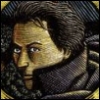
![[personal profile]](https://www.dreamwidth.org/img/silk/identity/user.png) friendofdorothy
friendofdorothy

![[personal profile]](https://www.dreamwidth.org/img/silk/identity/user.png) totallystoned
totallystoned
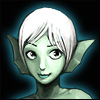 Naija//Aquaria//
Naija//Aquaria//![[personal profile]](https://www.dreamwidth.org/img/silk/identity/user.png) fathoming
fathoming
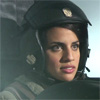
![[personal profile]](https://www.dreamwidth.org/img/silk/identity/user.png) crueldragonsthesis
crueldragonsthesis

![[personal profile]](https://www.dreamwidth.org/img/silk/identity/user.png) weeabhoo
weeabhoo

![[personal profile]](https://www.dreamwidth.org/img/silk/identity/user.png) abtakha
abtakha

![[personal profile]](https://www.dreamwidth.org/img/silk/identity/user.png) buttwarmed
buttwarmed

![[personal profile]](https://www.dreamwidth.org/img/silk/identity/user.png) themomentoftherose
themomentoftherose
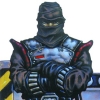
![[personal profile]](https://www.dreamwidth.org/img/silk/identity/user.png) littleshortforanelemental
littleshortforanelemental

![[personal profile]](https://www.dreamwidth.org/img/silk/identity/user.png) thekillingword
thekillingword

![[personal profile]](https://www.dreamwidth.org/img/silk/identity/user.png) seventeenyearstothisday
seventeenyearstothisday
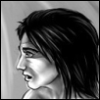 Therem Harth Rem Ir Estraven//The Left Hand Of Darkness//
Therem Harth Rem Ir Estraven//The Left Hand Of Darkness//![[personal profile]](https://www.dreamwidth.org/img/silk/identity/user.png) wintershadow
wintershadow

![[personal profile]](https://www.dreamwidth.org/img/silk/identity/user.png) brewseasily
brewseasily

![[personal profile]](https://www.dreamwidth.org/img/silk/identity/user.png) bathtothefuture
bathtothefuture
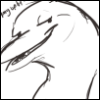
![[personal profile]](https://www.dreamwidth.org/img/silk/identity/user.png) brofin
brofin

![[personal profile]](https://www.dreamwidth.org/img/silk/identity/user.png) theduelistknownasprince
theduelistknownasprince

![[profile]](https://www.dreamwidth.org/img/silk/identity/user.png) forgedmiracle
forgedmiracle

![[profile]](https://www.dreamwidth.org/img/silk/identity/user.png) grandtheftmoe
grandtheftmoe

![[personal profile]](https://www.dreamwidth.org/img/silk/identity/user.png) hiredpistol
hiredpistol
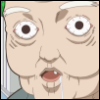
![[personal profile]](https://www.dreamwidth.org/img/silk/identity/user.png) legendaryvirgin(joke account)
legendaryvirgin(joke account)

![[personal profile]](https://www.dreamwidth.org/img/silk/identity/user.png) mma_megaman
mma_megaman
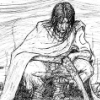
![[personal profile]](https://www.dreamwidth.org/img/silk/identity/user.png) remaderebel
remaderebel
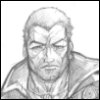
![[personal profile]](https://www.dreamwidth.org/img/silk/identity/user.png) schroedingersswordsman
schroedingersswordsman

![[personal profile]](https://www.dreamwidth.org/img/silk/identity/user.png) teenagebeefswelling
teenagebeefswelling

![[personal profile]](https://www.dreamwidth.org/img/silk/identity/user.png) theburntone
theburntone

![[personal profile]](https://www.dreamwidth.org/img/silk/identity/user.png) thewolfqueen
thewolfqueen
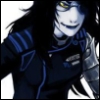
![[personal profile]](https://www.dreamwidth.org/img/silk/identity/user.png) true8orn
true8orn

![[personal profile]](https://www.dreamwidth.org/img/silk/identity/user.png) wormdancer
wormdancer

![[personal profile]](https://www.dreamwidth.org/img/silk/identity/user.png) hominilupusinexilio
hominilupusinexilio

![[personal profile]](https://www.dreamwidth.org/img/silk/identity/user.png) facelesshunter
facelesshunter

![[personal profile]](https://www.dreamwidth.org/img/silk/identity/user.png) seventeenyearstothisday
seventeenyearstothisday
Characters I want to play without/unimported journals (in no particular order):
Jame//The Chronicles Of The Kencyrath
C. "Roast Beef" Kazenzakis and Vlad//Achewood
Diziet Sma//The Culture series
Lila-Mae Watson//The Intuitionist
Andre Grandier//Rose Of Versailles
Rin Ogata//Rideback
Lionel Boyd "Bokanon" Johnson//Cat's Cradle
The Doubtful Guest//Amphigorey
The Kid//Dhalgren
Yuri Otani//Alien 9
Characters I want to play without/unimported journals (in no particular order):
Jame//The Chronicles Of The Kencyrath
C. "Roast Beef" Kazenzakis and Vlad//Achewood
Diziet Sma//The Culture series
Lila-Mae Watson//The Intuitionist
Andre Grandier//Rose Of Versailles
Rin Ogata//Rideback
Lionel Boyd "Bokanon" Johnson//Cat's Cradle
The Doubtful Guest//Amphigorey
The Kid//Dhalgren
Yuri Otani//Alien 9